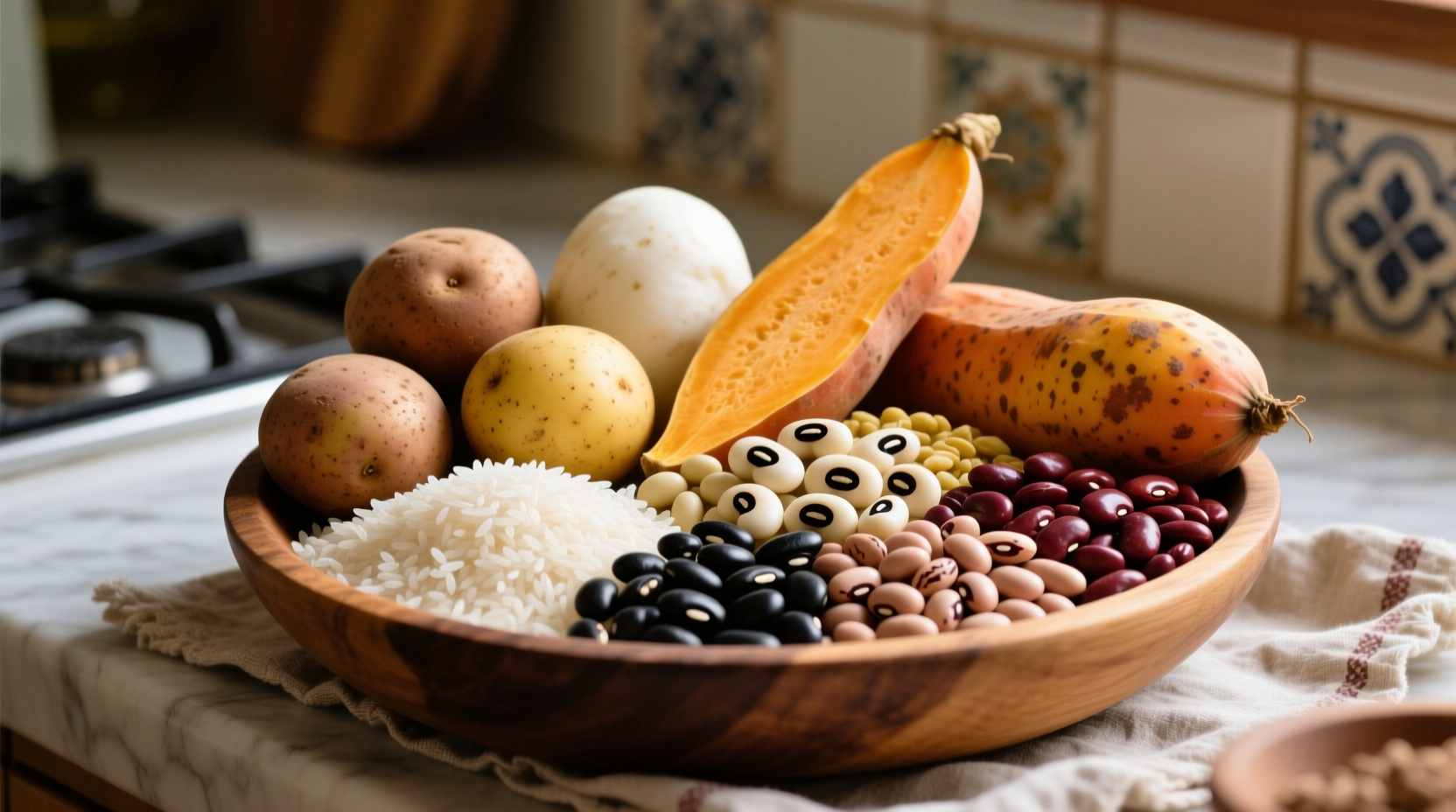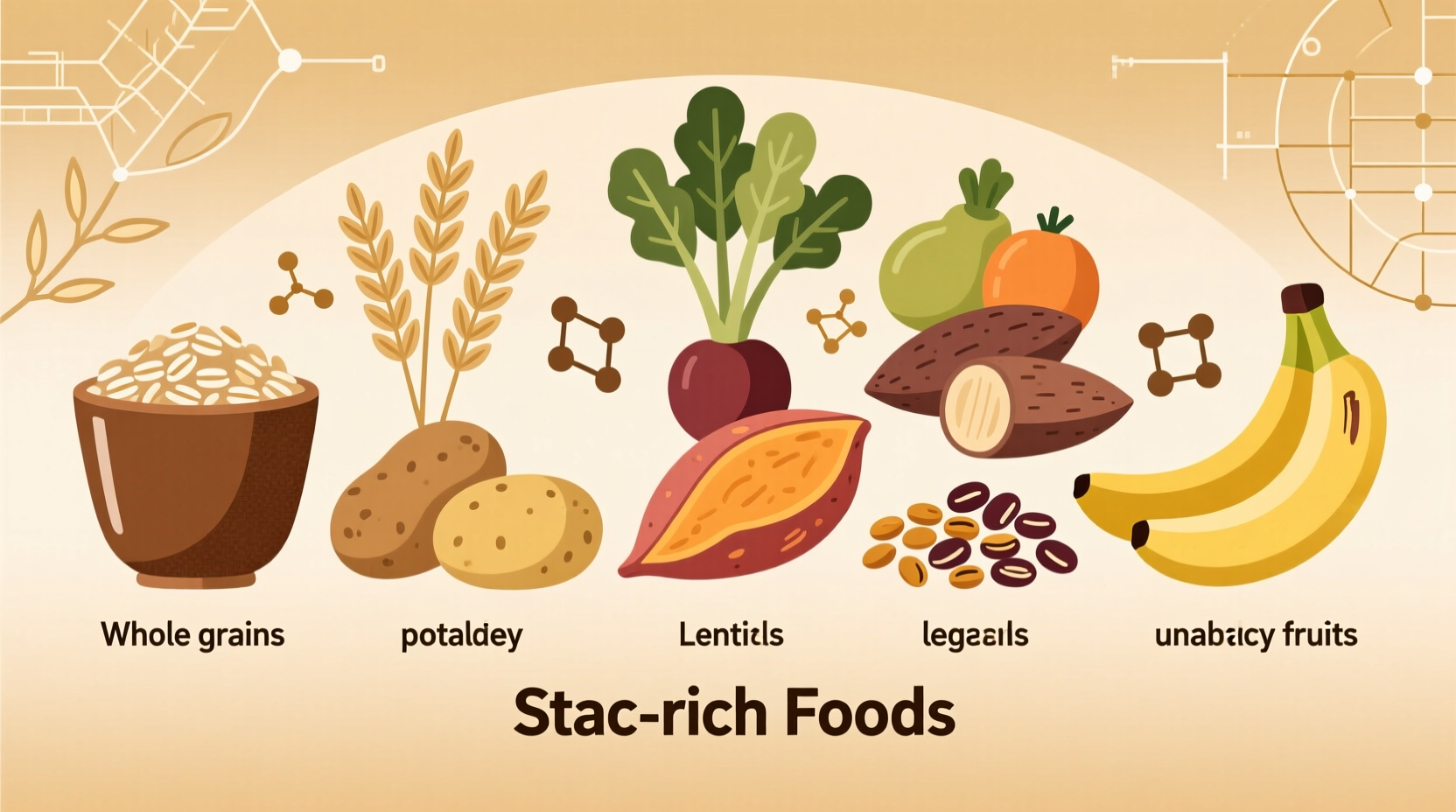What Exactly Are Starchy Foods and Why Should You Care?
When you search what foods are starches, you're likely trying to understand which everyday foods contain this important carbohydrate. Starches represent complex carbohydrates formed by plants as energy storage. Unlike simple sugars, starches break down gradually during digestion, providing sustained energy release.
Identifying starchy foods matters for several practical reasons:
- Planning balanced meals that provide steady energy throughout the day
- Managing blood sugar levels for diabetes prevention or control
- Understanding portion sizes for weight management goals
- Creating appropriate meal plans for athletes and active individuals
- Following specific dietary protocols like low-carb or Mediterranean approaches
Complete Guide to Common Starchy Foods by Category
Starchy foods fall into several natural categories based on their botanical origins. Knowing these categories helps you recognize starch sources in your daily diet and make informed choices about which options provide the most nutritional value.
Grains and Cereals: The Foundation of Many Diets
Grains form the largest category of starchy foods consumed worldwide. These provide not just starch but also valuable fiber, B vitamins, and minerals when consumed in whole form.
Common grain-based starchy foods include:
- Rice (white, brown, wild)
- Wheat products (bread, pasta, couscous)
- Oats (rolled, steel-cut, instant)
- Barley (pearl, hulled)
- Corn (maize, polenta, cornmeal)
- Quinoa (technically a seed but used like a grain)
- Buckwheat (despite the name, not related to wheat)
- Millet
- Sorghum
Legumes: Protein-Packed Starch Sources
Legumes offer the unique combination of starch plus plant-based protein, making them nutritional powerhouses. Unlike refined grains, most legumes retain their fiber content during preparation.
Common starchy legumes include:
- Beans (black, kidney, pinto, navy)
- Lentils (brown, green, red, black)
- Peas (green peas, split peas)
- Chickpeas (garbanzo beans)
- Soybeans (including edamame)
- Peanuts (technically a legume)
Root Vegetables: Nature's Underground Starch Stores
These vegetables develop substantial starch content as energy reserves. Many root vegetables offer additional nutrients like vitamin A (in orange varieties) and potassium.
| Root Vegetable | Starch Content (per 100g raw) | Key Nutrients |
|---|---|---|
| Potatoes | 15-20g | Vitamin C, potassium, vitamin B6 |
| Sweet potatoes | 12-17g | Vitamin A, vitamin C, manganese |
| Yams | 15-20g | Vitamin C, potassium, manganese |
| Beets | 8-10g | Folate, manganese, potassium |
| Carrots | 5-7g | Vitamin A, vitamin K, potassium |
How Starch Content Varies by Food Processing
The way we process starchy foods significantly impacts their nutritional profile. Understanding these differences helps make smarter dietary choices:
- Whole grains retain all parts of the grain (bran, germ, endosperm) and provide maximum fiber and nutrients
- Refined grains have the bran and germ removed, resulting in lower fiber content but longer shelf life
- Cooking methods affect starch structure - resistant starch increases when potatoes or rice are cooked and cooled
- Processing level matters - whole wheat flour maintains more nutrition than white flour
According to USDA FoodData Central, a medium cooked potato (150g) contains approximately 26 grams of starch, while the same amount of cooked brown rice contains about 30 grams. Whole grain products typically contain 15-25% more fiber than their refined counterparts, which affects how your body processes the starch.

Practical Tips for Managing Starchy Foods in Your Diet
Understanding which foods contain starch is just the first step. Here's how to apply this knowledge effectively:
Smart Portion Control Strategies
For most adults, a standard serving of starchy food equals about 15 grams of carbohydrates. Visual portion guides include:
- Cooked grains or starchy vegetables: ½ cup (about the size of a tennis ball)
- Whole grain bread: 1 slice
- Cooked legumes: ⅓ cup
Dietary Considerations for Different Health Goals
Your approach to starchy foods should vary based on your health objectives:
- For blood sugar management: Pair starchy foods with protein and healthy fats to slow digestion
- For athletic performance: Time starch intake around workouts for optimal energy
- For weight management: Focus on high-fiber starch sources and appropriate portions
- For digestive health: Include resistant starch sources like cooled potatoes or legumes
Grocery Shopping Guide
When selecting starchy foods at the store, look for these indicators of higher nutritional value:
- "Whole" as the first ingredient (whole wheat bread, not wheat bread)
- Minimal processing (steel-cut oats rather than instant)
- No added sugars (check labels on flavored grains)
- Short ingredient lists for packaged products
Common Misconceptions About Starchy Foods
Several myths persist about starchy foods that can lead to unnecessary dietary restrictions:
- Myth: All starchy foods spike blood sugar rapidly
Fact: Whole food starches with fiber digest more slowly than refined carbohydrates - Myth: Starchy foods cause weight gain
Fact: Portion size and overall diet quality matter more than starch alone - Myth: You should eliminate starches for optimal health
Fact: Many cultures with exceptional longevity include traditional starches as dietary staples
Research from the Harvard T.H. Chan School of Public Health indicates that whole grain consumption is associated with lower risks of heart disease, diabetes, and certain cancers. Their analysis of multiple studies shows that each 90-gram daily serving of whole grains reduces the risk of non-communicable diseases by 17-47%.
Starch in Global Diets: A Historical Perspective
Starchy foods have formed the foundation of human diets for millennia. Archaeological evidence shows that humans began processing starchy foods like grains and tubers as far back as 30,000 years ago. Different cultures developed unique approaches to starch preparation:
- Mesoamerican civilizations relied on corn, developing nixtamalization to improve nutrition
- Asian cultures perfected rice cultivation and preparation techniques
- Mediterranean societies incorporated wheat into breads and pastas
- Andean cultures cultivated diverse potato varieties
This historical context helps explain why certain starchy foods dominate regional cuisines and why traditional preparation methods often enhance nutritional value.











 浙公网安备
33010002000092号
浙公网安备
33010002000092号 浙B2-20120091-4
浙B2-20120091-4